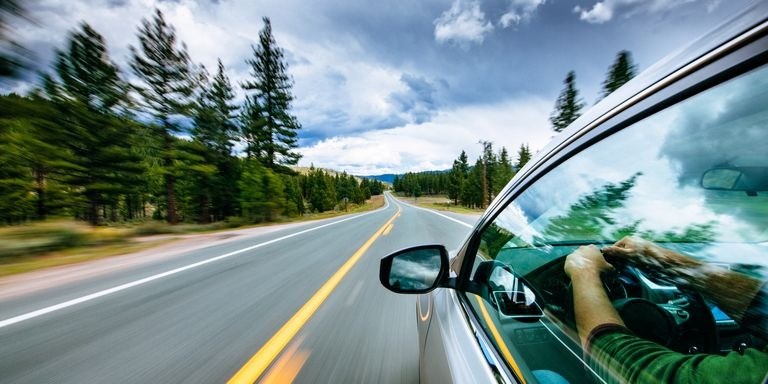In COVID Era, More Young Men Driving Unsafely
Preliminary data from the government's traffic-safety division shows a disturbing trend toward driving without seatbelts...

In COVID Era, More Young Men Driving Unsafely
Preliminary data from the government's traffic-safety division shows a disturbing trend toward driving without seatbelts, and other more dangerous behavior.
- Young males in rural areas drove more recklessly once COVID-19 arrived, according to new 2020 statistics from the National Highway Traffic Safety Administration (NHTSA).
- Drug use, including alcohol, cannabis, and opioids, was up in NHTSA's data of people involved in fatal crashes.
- In response, NHTSA has adjusted its messaging and will conduct five stakeholder panels in October to find ways to reach drivers with better safety messages for the coronavirus driving landscape.
When COVID-19 shut down most of the country this spring, it didn't take long for American drivers to pick up some bad driving habits. Fewer cars were on the road but more people were speeding, in part because police stopped enforcing as many traffic stops to minimize the spread of the coronavirus. Seatbelt use went down. And more people died with alcohol or other drugs in their system.
All of these things were reported anecdotally earlier this year, but the National Highway Traffic Safety Administration (NHTSA) released a report this week showing that U.S. roads are noticeably more dangerous in the COVID era than they were before. We looked at the headline numbers—an increase in the number of deaths per miles traveled—earlier this week, so here we're digging a bit deeper into NHTSA's analysis of just what's increasing the dangers out there these days. NHTSA's in-depth report has been in the works since early in the pandemic's days in the U.S.
"[In April], we saw troubling signs," said Nanda Srinivasan, NHTSA associate administrator for research and program development. "Speeding across the country seemed to be going up at the time, as quoted by several newspapers. More drivers appeared to be failing to put on seatbelts. And we had troubling early indications that drug and alcohol use was up."
During COVID, More People Driving under Influence
Once reason that NHTSA can compare pre-COVID numbers to what's happening now is because it started looking at drug and alcohol levels of "fatally injured drivers and other road user crash victims" last fall at five high-flow Level 1 trauma centers in East Coast states. The study ended up including over 3,000 fatalities, but since this was a "convenience sample" and only conducted over between seven and nine months (different centers starting collecting data at different times), the numbers may not be representative of the entire country and may show seasonal fluctuations that could only be noticed if NHTSA had years of data to analyze.
As is standard, NHTSA said, blood was drawn for clinical purposes when people were brought to the emergency room or morgue after the crash, and the blood was later tested for alcohol and a large number of drugs that may have impaired cognitive functions. While the testing procedures did change once the pandemic hit, the fact that the study was already underway meant that NHTSA could see if there were any noticeable changes stared during the pandemic.
That were, and not negligible ones, either. For all road users, the number of people who died who tested positive for alcohol went from 21.3 percent before March 16 to 26.9 percent during the COVID-19 public health emergency (NHTSA's data collection for this study ended in mid-July). The presence of cannabinoids went from 21.4 to 31.2 percent. Opioids? From 7.6 to 12.9 percent. Overall, vehicle drivers showed "significantly higher overall drug prevalence during the public health emergency with 64.7 percent testing positive for at least one active drug compared to 50.8 percent before the public health emergency began," NHTSA said. When broken down by sex, males were more likely to have positive results in any of these three categories than females. Also, positive rates were higher on weekends than weekdays.
The Roads Simply Looked Different, Too
It's no surprise that the amount of vehicles on the roads dropped this spring because of numerous stay-at-home orders throughout the country. The coronavirus decreased the number of vehicle miles traveled (VMT), but also brought about more deaths per 100 million VMT. In the second quarter, that number rose to 1.4, well up from 1.1 in the first quarter.
Aside from the drug issue, NHTSA found several factors that contributing to the increase in fatalities. As Srinivasan said, lower seatbelt use and increased speeding were anecdotally reported at the time, and that's exactly what the NHTSA discovered when it looked at the data.
Precise data on seatbelt use wasn't included in the NHTSA report, but the administration was able to infer a drop in usage from an increase in "ejection rates," which is the bureaucratic way of saying someone was thrown from a vehicle in a crash. The report says this increase was mostly found in males, people 18 to 34 years old, and people in rural areas. The fact that younger people were more likely to be involved in crashes was not simply because they were more reckless, but also because older people, who are more likely to suffer serious consequences should they contract COVID-19 and who are "characteristically safer and more risk-averse drivers," didn't drive as much.